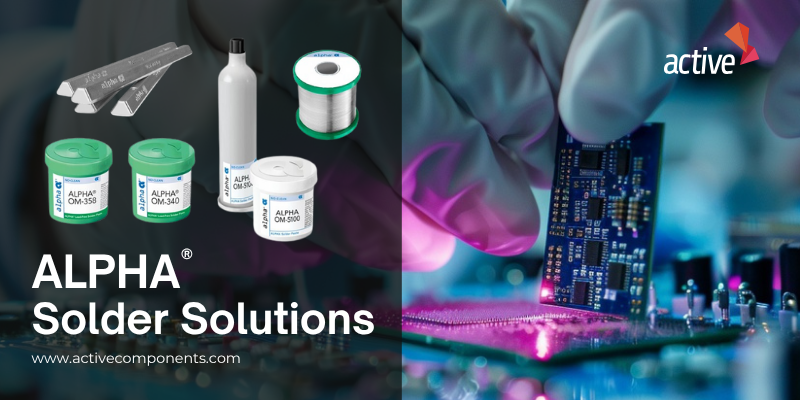
Understanding Soldering Materials in Electronics Assembly
Whether repairing a circuit board or managing a full production line, the right soldering material makes all the difference. But with terms like solder wire, paste, bar, and flux floating around—how do they all fit together? If you have ever wondered which type of soldering material suits which job, this quick guide breaks it down clearly.
What Is Solder Wire?
Solder wire is a thin, flexible wire made from a fusible metal alloy—typically a combination of tin and lead, or more commonly today, lead-free alternatives. It's a fundamental material used to join metal surfaces together through soldering.
When heated with a soldering iron, solder wire melts at a temperature lower than the metals it connects. This allows it to flow into joints between components, such as wires and circuit boards, and solidify into a durable, electrically conductive bond.
Solder wire is mostly used in electronics to form connections on printed circuit boards (PCBs). Most solder wires include a flux core—a chemical agent that cleans the metal surfaces during soldering and helps the molten solder adhere properly by preventing oxidation.
Whether you are assembling a new device or repairing a broken connection, solder wire is an essential material that ensures both mechanical strength and electrical conductivity.
What Is Solder Paste?
Solder paste is a thick, grey mixture made of tiny solder alloy particles suspended in a chemical flux medium. It plays a critical role in modern electronics manufacturing, especially in surface mount technology (SMT), by enabling the precise placement and bonding of components onto printed circuit boards (PCBs).
During assembly, solder paste is applied to the PCB using a stencil that deposits the paste exactly where the components will sit. Once the components are placed, the board goes through a reflow oven, where heat causes the solder particles to melt and bond the components to the board. As it cools, the paste solidifies, creating strong electrical and mechanical connections.
Solder pastes are available in both leaded and lead-free formulas and are tailored for different applications based on alloy composition, viscosity, and flux activity.
Solder paste is essential for high-speed, high-volume circuit board production, offering consistency, precision, and performance in every application.
What Is Solder Bar?
Solder bar is a solid, rectangular metal alloy used as a bulk soldering material in large-scale manufacturing processes. Typically made from tin, lead, silver, or their lead-free alternatives, solder bars are designed for high-volume applications such as wave soldering, selective soldering, and solder pot filling in the assembly of printed circuit boards (PCBs).
Unlike solder wire or paste, which are used for precision work, solder bars are melted in larger quantities to provide a consistent supply of molten solder. When heated, the solder bar liquefies and flows into joints between metal components, creating strong electrical and mechanical bonds as it cools and solidifies.
Solder bars are available in a variety of alloy compositions to meet specific performance requirements, including lead-free options for environmentally compliant manufacturing. Their efficiency, reliability, and compatibility with automated soldering systems make them essential for industrial electronics production, automotive applications, and other demanding assembly environments.
What Is Flux?
Flux is a chemical agent used during soldering to clean and prepare metal surfaces for bonding. Its primary role is to remove oxides and contaminants, prevent further oxidation during heating, and promote the smooth flow and adhesion of molten solder. This ensures strong, stable, and electrically conductive solder joints.
Flux comes in various forms, including paste, liquid, and as a core embedded within solder wire. Each type is tailored to different soldering applications and levels of cleaning strength.
Using flux is essential for achieving high-quality solder joints. It improves solderability, enhances connection reliability, and helps reduce defects in both manual and automated soldering processes.
| Type | Form
| Primary Composition
| Purpose
| Typical Applications |
| Solder Wire | Thin, flexible wire | Tin-lead or lead-free alloy (often with flux core) | Join metal surfaces with precision; used in manual soldering. | Hand soldering, PCB repair, prototyping. |
| Solder Paste | Thick, gray paste | Powdered solder alloy suspended in flux | Enable automated component placement and bonding. | SMT assembly, reflow soldering. |
| Solder Bar | Solid rectangular bar | Tin, lead, silver, or lead-free alloy | Provide bulk solder for high-volume soldering applications. | Wave soldering, selective soldering, solder baths. |
| Flux | Chemical agent (paste, liquid, or wire core) | Chemical compounds (rosin, organic, inorganic) | Clean and prepare metal surfaces; improve solder flow. | All soldering types; essential for strong, clean joints. |
Featuring ALPHA® – Our Trusted Soldering Solutions Partner
At Active Components, we proudly offer a full range of soldering materials from ALPHA®, supporting our customers with the quality and reliability of modern electronics assembly.
Founded in 1872 and now part of MacDermid Performance Solutions, ALPHA® brings over a century of expertise and a global footprint, with operations in more than 30 locations across Asia Pacific, the Americas, and Europe. As a worldwide leader in specialty materials for electronics manufacturing, ALPHA® is trusted by OEMs and assembly professionals.
We have partnered with ALPHA® for many years, and their products continue to meet the high standards required in today’s advanced manufacturing environments. On our website, you will find their comprehensive lineup of soldering solutions, including:
- Solder Wire – For precision hand soldering and repairs.
- Solder Paste – Optimised for SMT applications and reflow processes.
- Solder Bar – Ideal for wave and selective soldering systems.
- Flux offers VOC-free and no-clean options for cleaner, more efficient production.
Whether you're prototyping, scaling up production, or performing maintenance, ALPHA® products deliver the performance and consistency professionals rely on.
Ready to find the right soldering solution? Explore ALPHA® products on our website or reach out to our team for help choosing the best material for your specific application.
